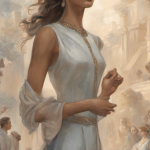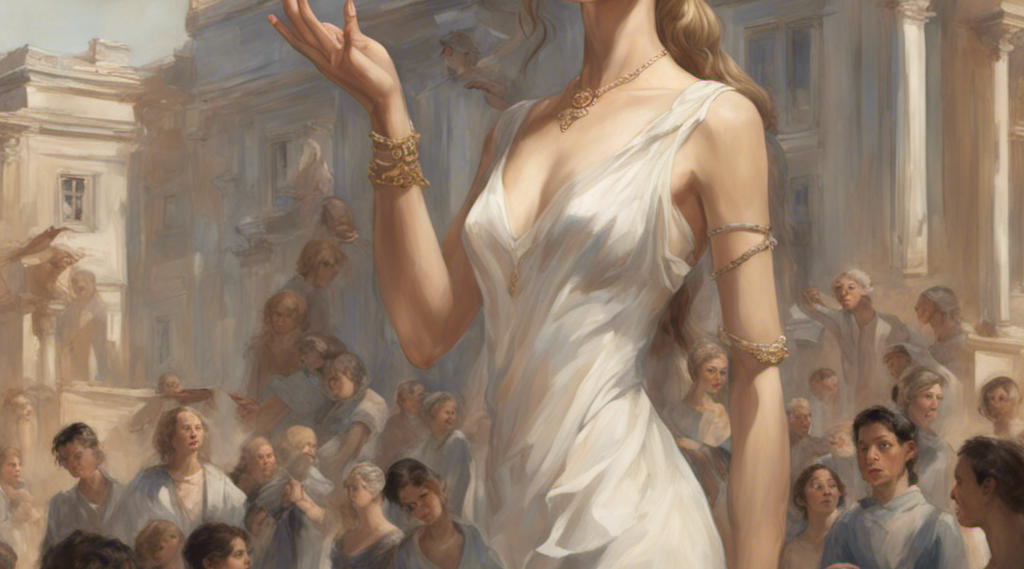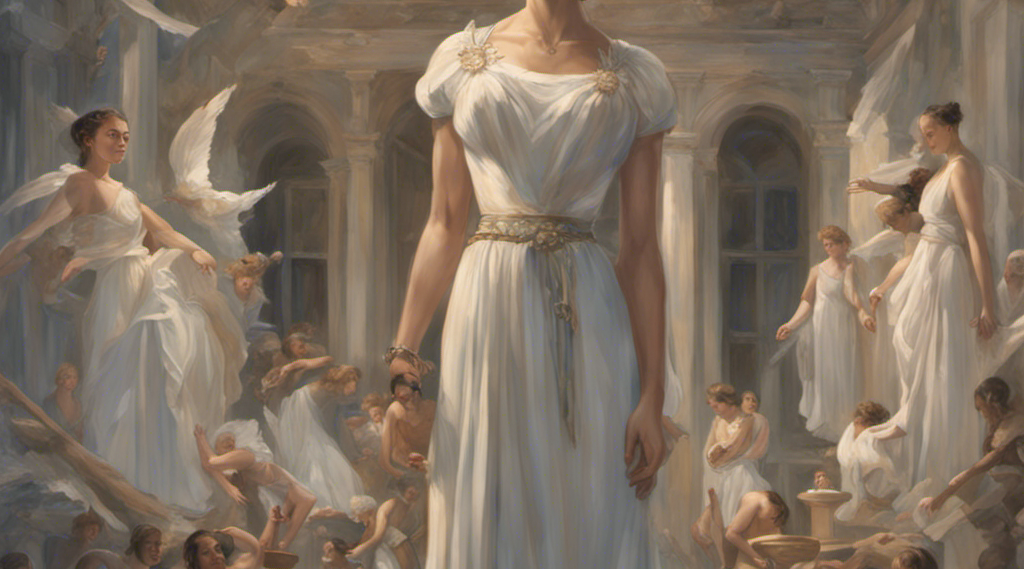
What is Feminism
Feminism is a social and political movement advocating for equal rights and opportunities for all genders. It seeks to challenge and dismantle systems of oppression and discrimination based on gender, aiming for gender equality in all aspects of society. Feminism addresses issues such as unequal pay, reproductive rights, violence against women, and gender stereotypes, while promoting empowerment, autonomy, and agency for women. It is important to note that feminism is not about elevating women above men, but rather about challenging and transforming the societal norms and structures that perpetuate gender inequality.
What Can We Get From Feminism
Feminism seeks to achieve gender equality and advocates for the rights and empowerment of women. Here are some things that can be achieved through feminism:
1. Gender equality: Feminism aims to challenge and eliminate gender-based discrimination, stereotypes, and biases. It strives to create a society where men and women have equal opportunities, access to resources, and decision-making power.
2. Women’s rights: Feminism fights for women’s rights to be free from violence, harassment, and abuse. It seeks to address issues such as domestic violence, sexual assault, and workplace discrimination, ensuring that women have equal protection under the law.
3. Empowerment: Feminism aims to empower women and girls by promoting self-confidence, self-worth, and agency. It encourages women to take up leadership roles, participate in decision-making processes, and pursue their goals and aspirations.
4. Intersectionality: Feminism recognizes that the experiences of women are influenced by their intersectional identities, including race, class, sexuality, and disability. It advocates for an inclusive feminism that addresses the unique challenges faced by women from diverse backgrounds.
5. Reproductive rights: Feminism advocates for women’s right to make decisions about their own bodies, including access to reproductive healthcare, contraception, and safe and legal abortion. It supports women’s autonomy over their reproductive choices.
6. Challenging patriarchal norms: Feminism seeks to question and challenge traditional gender roles and expectations that disadvantage both men and women. It aims to promote healthier and more equal relationships and redefine notions of masculinity and femininity.
7. Promoting diversity and inclusion: Feminism aims to create a more inclusive and diverse society where individuals of all genders can thrive. It works towards breaking down barriers and ensuring equal opportunities for marginalized groups, such as transgender women, non-binary individuals, and women of color.
8. Cultural and social change: Feminism has contributed to shifts in societal attitudes, norms, and laws. It has played a crucial role in promoting gender-sensitive policies, legislation, and institutions that protect and advance women’s rights.
Overall, feminism offers the opportunity to build a more equitable and just society, free from discrimination and oppression based on gender.
Strategies in Learning Feminism
Here are some strategies to help you learn and understand feminism:
1. Educate Yourself: Start by reading books, articles, and essays written by feminists. Some recommended books include “The Second Sex” by Simone de Beauvoir, “Feminism is for Everybody” by bell hooks, and “We Should All Be Feminists” by Chimamanda Ngozi Adichie. Online resources such as feminist blogs, websites, and academic journals are also valuable sources of information.
2. Attend Workshops and Conferences: Look for local events, workshops, and conferences focused on feminist topics. These events often feature speakers who provide insightful perspectives and facilitate discussions. Participating in such activities can enhance your understanding and allow you to engage in meaningful conversations with fellow learners.
3. Engage in Intersectional Feminism: Recognize that feminism intersects with other forms of oppression, such as racism, classism, ableism, and LGBTQ+ discrimination. Learn about intersectional feminism to ensure that your understanding and advocacy encompass the experiences of all marginalized groups.
4. Engage in Dialogue: Seek out conversations and engage in discussions with feminists and individuals who hold diverse perspectives. Social media platforms, forums, and local activist groups can be great avenues for engaging in respectful dialogues and learning from others.
5. Follow Feminist Thinkers: Identify feminists or feminist organizations that resonate with you and follow them on social media or read their books. This can help you stay updated regarding current feminist debates, conversations, and advancements.
6. Academic Courses or Online Learning: Many educational institutions offer courses across various disciplines that examine feminist theories, histories, and movements. Alternatively, you can enroll in online courses or webinars offered by reputable organizations to gain a more structured understanding of feminism.
7. Practice Active Listening and Empathy: Listening and empathizing with the experiences and perspectives of individuals from different backgrounds is crucial in becoming a more effective learner and ally. Be open-minded, acknowledge the experiences of marginalized communities, and integrate their narratives into your understanding of feminism.
8. Support Feminist Causes: Actively support feminist organizations, campaigns, and initiatives. This can involve attending rallies, signing petitions, donating to causes that promote gender equality, volunteering, or participating in activism projects.
It is important to recognize that learning about feminism is a continuous process. Be willing to acknowledge and unlearn any biases or assumptions you may have, remain open to new ideas, and continually seek to expand your knowledge and understanding.

Pride and Prejudice by Jane Austen
Summary
Pride and Prejudice” by Jane Austen is a classic romantic novel set in 19th-century England. It revolves around the Bennet family, particularly the five Bennet sisters: Jane, Elizabeth, Mary, Kitty, and Lydia. The story focuses on Elizabeth, the second eldest sister, who is known for her wit and intelligence.
The plot unfolds when the wealthy and eligible bachelor, Mr. Bingley, arrives in the town of Hertfordshire and creates quite a stir with his amiable personality and fortune. He develops an instant connection with Jane Bennet, which is encouraged by her mother and sisters, except for Elizabeth, who remains skeptical. Meanwhile, Bingley’s brooding and seemingly arrogant friend, Mr. Darcy, catches the attention of Elizabeth, despite her initial disdain for his haughty demeanor.
As the story progresses, misunderstandings and social conventions play a significant role in complicating relationships. Elizabeth’s first impression of Darcy leads to prejudice against him, further fueled by his alleged interference in Jane and Bingley’s relationship. On the other hand, the charming Wickham, a military officer with a mysterious past, fills Elizabeth’s ears with tales that further prejudice her against Darcy.
However, as Elizabeth gets to know Darcy better, she realizes her initial judgment was clouded by her own pride and misconceptions. Darcy, too, recognizes his own faults and endeavors to rectify them. The novel explores themes of love, marriage, social class, and the power of first impressions.
The book delves into the intricacies of courtship and the importance of self-awareness, personal growth, and humility in developing meaningful relationships. With its lively wit, Austen’s portrayal of the societal norms and the different personalities of the characters captivates readers, ultimately leading to a satisfying and heartwarming conclusion.
Overall, “Pride and Prejudice” is a timeless and beloved novel that examines the complexities of human behavior, social expectations, and the transformative power of love.
Reasons for Recommendation
1. Strong Female Characters: Pride and Prejudice showcases a range of strong, independent-minded female characters who challenge traditional gender roles. Elizabeth Bennet, the protagonist, defies societal expectations by rejecting marriage proposals that lack respect and genuine affection, emphasizing the importance of a woman’s agency and autonomy.
2. Critique of Patriarchy: Jane Austen skillfully criticizes the patriarchal society of her time, exposing the injustices and limitations imposed on women. Through clever dialogue and irony, she highlights the societal pressure for women to marry for financial security rather than love, as well as the unequal power dynamics within marriages.
3. Female Empowerment: Austen’s novel promotes self-empowerment and self-improvement for women. Elizabeth Bennet challenges societal norms by prioritizing her own happiness and refusing to conform to the expectations placed on her gender. Her refusal to marry solely for status or wealth demonstrates a commitment to individual fulfillment and personal growth.
4. Friendship and Solidarity Among Women: Pride and Prejudice presents positive depictions of female friendships and support systems. Characters like Elizabeth and her sister Jane rely on each other for emotional support and act as confidantes. Austen emphasizes the importance of women forming strong bonds and helping each other navigate a patriarchal world.
5. Satire of Gender Stereotypes: Austen uses satire to ridicule gender stereotypes and highlight their absurdity. Characters like Mr. Collins, who adheres to rigid gender roles, are portrayed comically and serve as social critique. By exposing the limitations and stereotypes placed on both men and women, the novel challenges traditional gender expectations.
6. Importance of Education and Intellect: Pride and Prejudice highlights the significance of education and intellectual compatibility in relationships. Elizabeth values her own intelligence and seeks a partner who stimulates her intellectually. Austen emphasizes the value of women cultivating their minds and being seen as more than just objects of desire.
7. Subversion of Social Class Expectations: Austen explores the limitations society places on women based on their social class. Characters like Lady Catherine de Bourgh attempt to assert their dominance and control over women from lower social standings, but Austen challenges these power dynamics and asserts the equality and agency of women, regardless of their social status.
Overall, Pride and Prejudice can be recommended from a feminist perspective as it explores themes of female empowerment, challenges patriarchal norms, and presents strong female characters who navigate a society that seeks to confine them.

Jane Eyre by Charlotte Bronte
Summary
Jane Eyre is a novel written by Charlotte Bronte and published in 1847. It follows the life of the title character, Jane Eyre, from her tumultuous childhood through her later years. The story is a bildungsroman, focusing on Jane’s personal and emotional growth as she navigates various obstacles and challenges.
The novel begins with Jane as a young orphan living with her cruel aunt and cousins. Despite enduring mistreatment and neglect, Jane possesses a resilient spirit and a thirst for knowledge. Eventually, she is sent to Lowood School, where she forges friendships and receives an education. However, she still faces hardships, including the death of her closest friend Helen Burns and the oppressive regime of the school.
After leaving Lowood, Jane becomes a governess at Thornfield Hall, an estate owned by the brooding and mysterious Mr. Rochester. Jane and Rochester develop a deep connection and fall in love, but their relationship is complicated by the revelation that Rochester is already married to Bertha Mason, a madwoman hidden away in the attic. Jane, torn between her love for Rochester and her principles, ultimately chooses to leave Thornfield and start a new life.
She ends up at Moor House, where she meets her long-lost relatives, the Rivers family. Jane finds purpose and companionship with them, particularly with St. John Rivers, a zealous missionary. However, Jane still longs for Rochester and eventually learns that he has suffered a tragic accident, resulting in the loss of his sight and a maimed hand. She decides to return to him, and the couple is reunited.
In the end, Jane and Rochester marry and find happiness together. The novel explores themes of independence, morality, and the struggle for identity. Jane Eyre is often regarded as a groundbreaking work in terms of its feminist ideals, as Jane refuses to compromise her values and fights against societal conventions. It remains a beloved classic in English literature.
Reasons for Recommendation
1. Empowered Female Protagonist: Jane Eyre is a prime example of a strong, independent female character, who defies societal expectations and stands up for herself. She is not simply a passive or submissive heroine, but a woman who assertively pursues her own desires and values, making her a feminist role model.
2. Critique of Gender Roles: The novel challenges traditional gender roles imposed on women during the Victorian era. Bronte highlights the limitations placed upon women by exploring the experiences and struggles of her protagonist. Through Jane’s journey, the book emphasizes the need for women to have agency, independence, and the freedom to make their own choices.
3. Equality in Relationships: Jane Eyre emphasizes the importance of mutually respectful relationships and rejects the notion of male dominance or superiority. The novel advocates for equality within partnerships, as seen in Jane’s refusal to surrender her independence to Rochester, demanding to be treated as an equal rather than a submissive wife.
4. Rejection of Beauty Standards: Jane Eyre repeatedly emphasizes the significance of inner beauty and character over external appearance. By refusing to conform to societal beauty standards and prioritizing personal growth and mental strength, Jane challenges the idea that a woman’s worth lies solely in her physical attractiveness.
5. Critique of Patriarchy: The book delves into various aspects of patriarchy, highlighting its negative effects on women’s lives. It critiques the suppressive power structures that limited women’s rights and choices during the Victorian era, addressing topics such as control, objectification, and inequality.
6. Female Sexuality: Jane Eyre subtly explores female sexuality and challenges the double standards society places on women. Bronte explores the complexity of desire, consent, and emotional fulfillment, underscoring the importance of female desires and autonomy.
7. Female Friendship and Support: The novel also examines the importance of female friendship in enabling women to navigate patriarchal and oppressive environments. Jane forms strong bonds with other women in the book, such as her friendships with Miss Temple and Helen Burns, showing the solidarity and strength women can find in each other.
8. Feminist Themes ahead of their Time: Jane Eyre was published in 1847, an era when feminist thought was only beginning to emerge. Bronte’s novel tackles feminist themes way ahead of its time, making it a trailblazing work in advocating for gender equality and women’s rights.
Overall, Jane Eyre remains a highly recommended text from a feminist perspective due to its portrayal of a resilient and independent female protagonist, its critique of gender roles and patriarchy, and its exploration of various feminist themes relevant to both historical and contemporary contexts.
Frida – A Biography of Frida Kahlo by Hayden Herrera
Summary
Frida: A Biography of Frida Kahlo” by Hayden Herrera is a comprehensive account of the life and art of the iconic Mexican artist Frida Kahlo. Drawing from extensive research and interviews with Kahlo’s friends, family, and associates, Herrera unveils the complex and fascinating story behind Kahlo’s unique artistic talent and her tumultuous personal life.
The biography begins with Kahlo’s childhood, exploring her fraught relationship with her mother, her love for her father, and her battle with polio that left her with lasting physical disabilities. It then delves into Kahlo’s early artistic journey and her enrollment at the prestigious National Preparatory School in Mexico City, where she encountered muralist Diego Rivera, who would become her mentor, lover, and eventually her husband.
Herrera chronicles Kahlo’s artistic development and her exploration of various artistic styles and themes. She reveals how Kahlo’s personal experiences, including a devastating bus accident that caused lifelong physical pain and multiple miscarriages, deeply influenced her artwork, which is often characterized by its raw emotion, symbolic imagery, and exploration of her own identity as a woman, a Mexican, and a disabled person.
The biography also delves into the complex personal life of Kahlo, exploring her stormy relationship with Rivera, which was marred by infidelity on both sides, and their shared politics as committed Communists during a time of political upheaval in Mexico. Herrera also sheds light on Kahlo’s relationships with other artists, intellectuals, and political figures, providing a rich context for understanding the impact Kahlo had on the cultural and artistic landscape of her time.
Through extensive analysis of Kahlo’s correspondence, personal diary entries, and interviews, Herrera paints a vivid portrait of a fiercely independent and resilient woman who used art as a powerful means of self-expression and self-discovery. Frida: A Biography of Frida Kahlo” offers readers a deep insight into the life and art of this extraordinary artist, showcasing her tremendous talent, her struggles, and her enduring legacy as a feminist and an icon of Mexican culture.
Reasons for Recommendation
1. Representation: Frida Kahlo is an essential figure in feminist history, as her art resonates deeply with female experiences, including pain, resilience, and identity. Herrera’s biography offers an in-depth exploration of Kahlo’s life, allowing feminists to understand how her work reflects and responds to patriarchal structures.
2. Challenging gender norms: Kahlo’s art challenges traditional notions of femininity and beauty by depicting her physical and emotional pain, as well as her complex relationships. Herrera’s biography delves into Kahlo’s defiance of societal expectations, highlighting her rejection of traditional gender roles and her insistence on self-expression.
3. Women’s agency and empowerment: Kahlo’s biography emphasizes her autonomy as a woman during a time when women were expected to conform to societal norms. Her refusal to be defined by her physical or emotional pain is inspiring to feminists, and Herrera’s detailed account supports this narrative, showcasing Kahlo’s strength and resilience as she navigated personal and artistic challenges.
4. Intersectionality: Kahlo’s identity as a Mexican woman also intersects with her feminism, as she addressed issues of race and class in her art. Herrera’s biography explores these intersections, helping feminists understand Kahlo’s unique position as an artist who was both marginalized and empowered by her intersectional identity.
5. Art as activism: Kahlo’s artistic expression served as a form of activism, challenging oppressive systems and traditional notions of femininity. Herrera’s biography provides insight into how Kahlo used her art and personal experiences to make bold statements about gender inequality, thereby inspiring feminists to harness their own creative power for social change.
6. Intergenerational influence: Kahlo’s artistic legacy is still felt today, as she continues to inspire and empower women of all ages. Herrera’s biography offers a comprehensive view of Kahlo’s life, allowing feminists to appreciate her enduring impact and understand how she became an icon for generations of women.
Overall, recommending “Frida – A Biography of Frida Kahlo” by Hayden Herrera from a feminist perspective highlights Kahlo’s contributions to feminist art history, her defiance of societal norms, and her ongoing influence as an empowering figure for women.